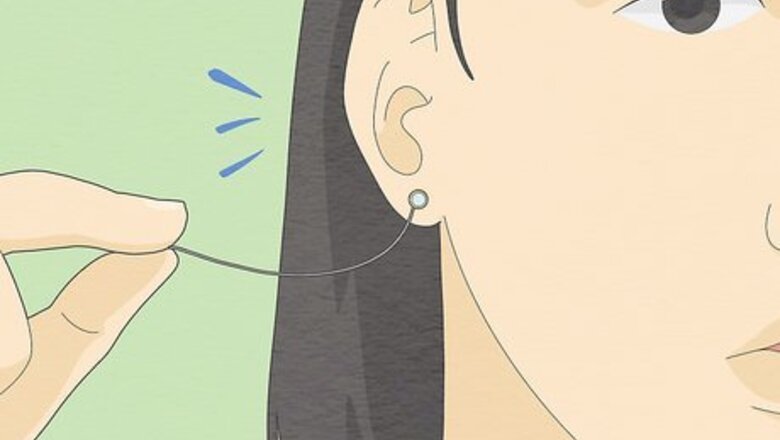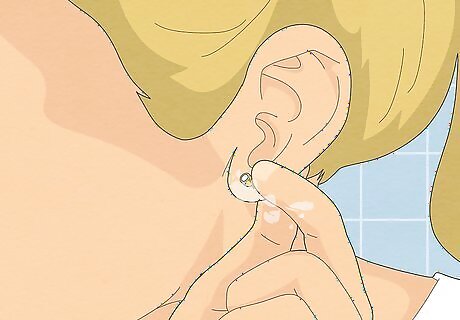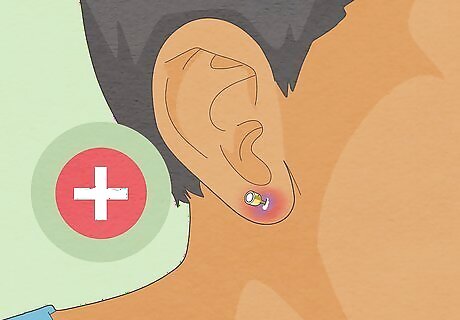
views
What is the white string urban legend?

It’s a Japanese tale about a girl who finds a white string in her piercing. As the story goes, a young girl once longed to get her ears pierced. Her parents gave her money to see a professional piercer, but the girl decided to pocket the money and had a friend to pierce her ears instead. The day after, the girl’s ear felt itchy and painful, and she noticed a white string sticking out of it. As she pulled, the girl found that the string didn’t have an end; it just kept going. She grabbed a pair of scissors and snipped off the string to get rid of the excess—and lost her vision immediately. Later, she learned that the "string" she cut was actually her optic nerve, which is why she went blind. In one variation of this urban legend, the person in question found a white string sticking out of their nipple piercing. When they snipped the string, they experienced terrible pain, fell unconscious, and defecated themselves unknowingly. (They didn’t go blind, though.)
Is there any truth to this legend?

No, this urban legend is fake and completely implausible. Your optic nerve is a cranial nerve that goes between your eye and your brain. While you do need your optic nerve to see, it isn’t connected to your ear whatsoever—so, it’s impossible that getting an ear piercing (or any type of piercing) can cause the white string phenomenon. Your optic nerve connects directly to your brain, which allows you see and process the world around you. Even if your optic nerve physically could protrude from your ear, your vision would already be gone at that point since one end of the nerve clearly isn’t connected to the eye or brain. Optic nerve issues can impact your vision, but they don’t manifest as a white string dangling from your ear. Some optic nerve disorders include glaucoma, optic neuritis, optic nerve head drusen, and optic nerve atrophy.
Best Practices for a New Ear Piercing

Get your piercing done by a professional piercer. Even though an at-home piercing won’t destroy your optic nerve, it will leave you susceptible to infection. Instead, meet with a professional piercer who can properly pierce your ear in a safe and sterile environment. Check Safe Piercing’s website to find a reputable piercer near you.

Wash your hands whenever you handle your new piercing. Your new piercing is essentially an open wound, so you don’t want to introduce any germs to it and risk an infection. Always wash your hands with soap and water before touching or handling your piercing so it can stay as sterile as possible.

Clean your piercing daily with a gentle, unscented soap. Dip a cotton swab into a mixture of water and fragrance-free soap and rub all around the front and back of the piercing site. (Don’t take out your jewelry, though!) Then, rinse off any suds with clean water and blot the piercing dry with a paper towel. Never clean your piercing with harsh, aggravating products like iodine, hydrogen peroxide, antibacterial soap, or rubbing alcohol—these do more harm than good. If your piercer gives you specific aftercare instructions, be sure to follow them accordingly.

Coat the piercing site with petroleum jelly. Grab a tube of petroleum jelly and squeeze a tiny bit onto a cotton swab. Then, apply the product in a thin layer around the front and back of the piercing site. A wound that’s kept moist heals much more quickly than a dry one! Avoid using a jar of petroleum jelly, as this creates a higher risk of contamination.

Visit your doctor if you suspect that your piercing is infected. Soreness, puffiness, redness, and oozing pus are all potential signs that your piercing could be infected. If you’re worried, visit your doctor to get a second opinion, and follow their treatment suggestions if they confirm that you have an infection. It can take between 2 and 6 months for a piercing to fully heal.




















Comments
0 comment